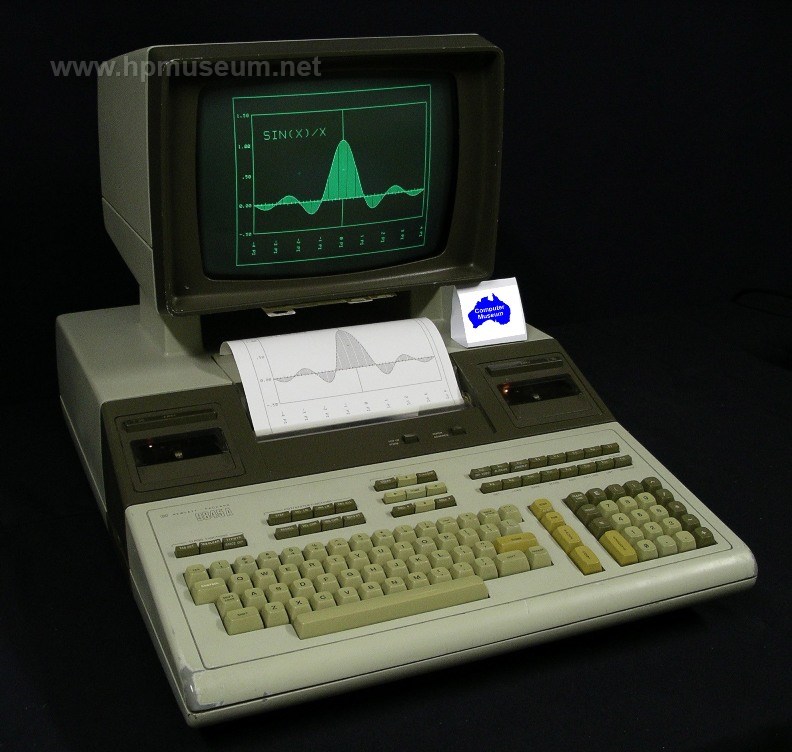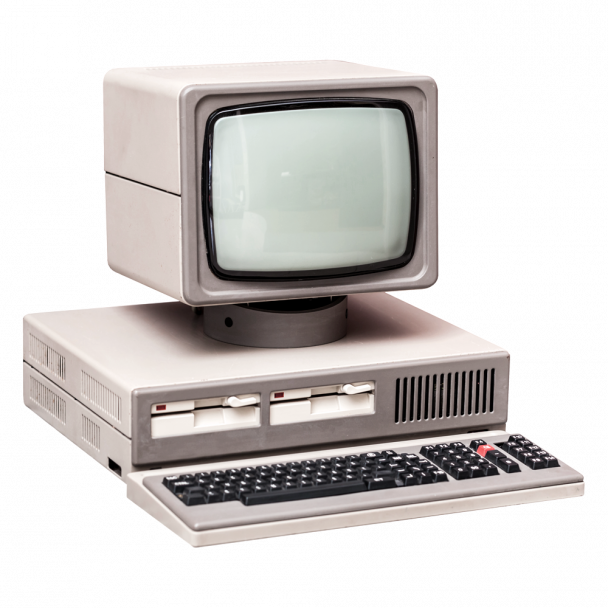I really enjoy both the visual and tactile elements of old computer terminals from the 1970s and 1980s. While the technology that we interact with now has digital representations of buttons, switches, and knobs, there is something that is enjoyable about the tactile feel and sound of physical buttons from early computers. When brainstorming what I wanted to do for my project, I found my old bin of broken electronics, including a broken mechanical keyboard, some old Arduino components and a worn out Xbox controller. This inspired me to want to create an interactive piece, utilizing the old switches and knobs that I can find.

HP 9845c, CREDIT: www.hpmuseum.net
There are several key aesthetic features of these early personal computers. They have monochromatic crt displays, often with green or blue backlighting. There is also a text based interface with a characteristic digital font. The cases are generally plastic with off-white and beige tones, mixed with darker accents, they also have large vent grates for cooling. The keys are large and chunky, with typography that is simple and bold. Auditorily, there is also the distinct whir of fans and a loud, “clacky” keyboard.
Below are some examples of early personal computers from the 1970s and 80s:

1971 Kenbak 1, CREDIT: abelimray150.com

DEC VT100, CREDIT: en.wikipedia.org
I have some old glass panes that I would repurpose to make a screen, and I would also like to repurpose the switches in the keyboard due to their satisfying tactile feel , as well as the font style on the switches. I could also use the analog sticks on the Xbox controller. One idea that I have for the lights is using the R, G, and B keys to control an LED to produce different colors on the “display”. I could also use the numpad, where pressing different values could light up LEDS corresponding to the binary representation of the number. At this point, I’m not 100% sure how literally I want to interpret the 1970s/1980s computer aesthetic. Meaning I could just create the piece to be a small replica of an old terminal, or I could be a bit more abstract/artistic while still sticking to the distinct style that these old machines have.
CITATIONS:
https://www.hpmuseum.net/exhibit.php?cat=11&class=1
https://en.wikipedia.org/wiki/Computer_terminal
https://abelimray150.com/story/personal-computer-1970-onwards


7 Comments. Leave new
[…] the tactile switches and knobs of a vintage HP 9845c can transform an ordinary lamp into an interactive art piece, reminiscent of the 1970s and 80s tech […]
Hey Luke! I really like how you adapted the aesthetic of early technology to be something that you enjoy, specifically the tactical feel that shapes the perspective of the user. Do you have a plan about the shape or size of your project? Will it have a clear interface for the viewer to interact with?
I am planning on keeping it relatively small, probably no larger than a 6″ cube. I think I will use LEDs to backlight the “screen”, and then have a paper with cutouts to make the text on the screen.
Luke,
I think this is an awesome idea and I completely resonate with your nostalgia for the older tech! I think you did a great job explaining what resourses you plan to use and the photos you included in your post represent the aesthetic very well.
Do you have any experience with coding a display before? What challenges do you forsee in repurposing old (and potentially broken) electronics?
I have some basic experience with making an LED array, but I think for this project I’m going to keep it simple and have the “display” just be made from a laser cut piece of paper that is backlit by LEDs to give the appearance of an old monochrome display.
This is a great idea, Luke. I really resonate with your notion that the tactile and visual elements of the technology of the 70s and 80s are cooler than what we have today in many ways. Yes we have more processing power and technological capabilities today, but we have also mostly lost touch with the appeal of buttons that you can actually use and how certain people have a real draw to them, as opposed to touchscreens. Do you have a certain interactive feature that you want out of your piece?
Thanks for your comment, I think for the interactive element I will have the a few keyboard switches to change the color of the LEDs or turn it off and on. I could also use the joysticks to control brightness or hue of the LEDs.